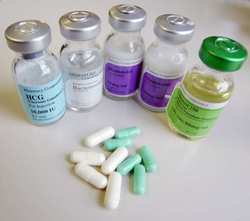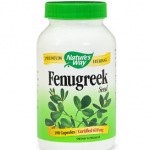Anabolic:Androgenic Ratios and Ratings – What They Really Mean
Blog Entry #28
By Dan Chaiet, Senior Editor – Steroidal.com
Much of the focus here on Steroidal.com’s articles and profiles focuses quite a bit on the anabolic:androgenic ratio (also referred to as anabolic and androgenic ratings) in determining how to properly use any given anabolic steroid in a cycle. These values also tell us a lot about the compound itself, but it doesn’t tell us everything. It is very important for any anabolic steroid user to understand what these values are, what they mean, and how they were originally derived so that people know exactly what they are dealing with. Very often are the anabolic:androgenic ratios relied upon far too heavily, or they are ignored far too much. Although they are very important but do not dictate with 100% accuracy the effectiveness or characteristics of an anabolic steroid, they cannot be completely ignored either.
Firstly, all anabolic steroids have two primary effects on any vertebrate organism: anabolic and androgenic effects, both of which are not mutually exclusive. It should be basic knowledge to most who are reading this right now that anabolic effects are the muscle growth promoting effects, and the androgenic effects are the masculinizing effects (such as the deepening of the voice, growth of facial and bodily hair, etc.). In order for a steroid to be considered an anabolic, it must have a greater affinity to produce more muscle growth (anabolism) than it does androgenic effects. For example, some synthetic steroids that were created during the anabolic steroid development boom from the 1950s to the late 1980s exhibited an anabolic rating of 0, while the androgenic rating was much higher. These obviously would be classified as strictly androgenic steroids, and it is also quite obvious why these compounds never surfaced with any degree of popularity among athletes and bodybuilders.
Because both of the anabolic and androgenic effects expressed by anabolic steroids are mediated via the androgen receptor, often times a reduction in the androgenic strength of a compound will also be met with a reduction in anabolic strength. Similarly, not all anabolic properties of anabolic steroids are exhibited through the androgen receptor, which would explain why some compounds in reality seem weaker than their anabolic:androgenic ratios would suggest, and other compounds might seem to elicit a stronger anabolic effect than its anabolic:androgenic ratio would suggest. These are examples where the reality is different from the numbers and figures on paper, and other non-receptor mediated properties of the given anabolic steroid need to be taken into consideration. This is indeed the case with many different synthetic derivatives of Testosterone.
Of course, the goal of the anabolic steroid development boom that reached its peak in the 1960s (before the word “steroid” became stigmatized and attached to fear mongering) was to create an anabolic steroid that could exhibit all of the strong anabolic effects, but none of the (often less desirable) androgenic effects. Of course this was never the case, as I have previously mentioned that the anabolic and androgenic effects of anabolic steroids are inseparable. A “perfect steroid” (in the sense that anabolic and androgenic properties were completely dissociated) was never created, but a few did come very close, and in the case of those anabolic steroids (such as Anavar or Primobolan), the anabolic and androgenic properties were significantly distanced from one another.
At the same time in the 1960s, a system needed to be designed whereby the different anabolic steroids created needed to be tested as well as held to a particular standard of measurement of strength. This is much like how temperature, for example, utilizes the Fahrenheit or Celsius scales of measurement. And much like how the Celsius scale utilizes the freezing and boiling point of water (0 and 100 degrees respectively) as the standard, this system would utilize Testosterone as the standard by which all other anabolic steroids would be measured to. In the case of orally administered anabolic steroids, Methyltestosterone would be the standard. This system involved the administration of anabolic steroids on rats, either orally or by injection (depending on the anabolic steroid being assessed).
This was known as the Hershberger Assay. After administration, various body parts and muscles of the rats would be analyzed (such as the levator ani, seminal vesicles, and ventral prostate). These tissues would be compared to the size of tissues that were exposed to the standard (either Testosterone or Methyltestosterone, depending on whether the anabolic steroid being assayed was oral or injectable). The levator ani, for example, is a muscle in animals with tails that propels the tail in a wagging motion. An increase in muscle size and weight of the levator ani would indicate a fairly accurate estimation of an anabolic steroid’s anabolic capabilities. The seminal vesicles as well as the ventral prostate are tissues that contain a high concentration of androgen receptors and are very sensitive to androgenic effects, and so any growth observed in those tissues would indicate the propensity for a compound to exert androgenic effects in an organism or tissue.
It is through the Hershberger Assay and the markers explained above that science attempted to generate an anabolic steroid that would exhibit a high anabolic value and a low androgenic value. This is also the method whereby all known, tested, and recorded anabolic/androgenic steroids had their androgenic:anabolic ratio values determined. In the 1960s, a scientist by the name of Julius Vida took the time to review and compile all of the known data at the time, and published a book that described all of these values and characteristics of the known anabolic steroids in detail. That book was called Androgens and Anabolic Agents – Chemistry and Pharmacology.
Lastly, it is important to understand that these values are not the end-all-be-all in determining the capabilities of an anabolic steroid. But they should be the first place to start when reading and researching different compounds. The figures discovered using the Hershberger Assay provides us a general and reasonable idea of the anabolic and androgenic qualities of a given anabolic steroid. Within science and medicine, these are the very first initial tests that are conducted when a new anabolic steroid is discovered or developed in order to determine whether or not further testing and research into a particular anabolic steroid is worth the time and effort or not. If the Hershberger Assay of a given anabolic steroid provides desirable anabolic and androgenic values, it would likely progress to the next stage of testing, and ultimately towards human clinical trials.








